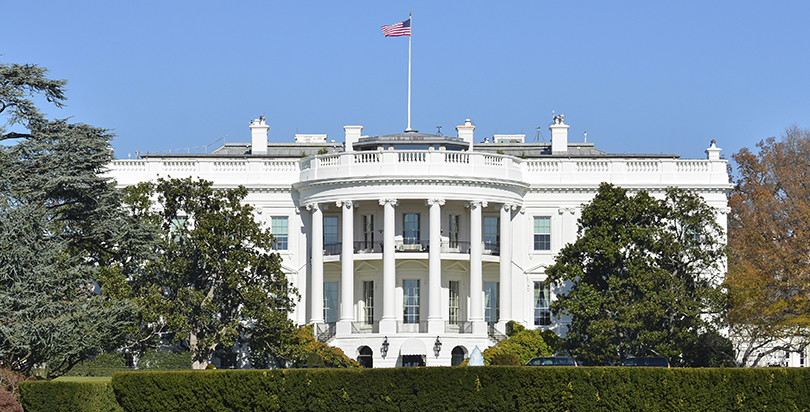Tucker: Want a President Who Will Tackle Income Inequality? First Get a Candidate Who Will Talk K-12 Education

Isn’t public education presidential? Isn’t it more important to the nation than Donald Trump’s buffoonery or the size of Bernie Sanders’ crowds?
Well, of course it is.
Every candidate on the campaign trail should have a plan to overhaul the nation’s public schools to ensure that every child, no matter his parents’ income or family structure, gets an excellent education. The crosswinds of a globalized economy demand it.
Yet, K-12 public education has garnered little attention. At least Republicans have mentioned the Common Core, if only to wrongheadedly distance themselves from it. And six of the GOP candidates attended a New Hampshire forum on education hosted by The Seventy Four in August, speaking at length about their plans. (You can search and filter through those conversations in the interactive video at the bottom of this post.)
By contrast, Democratic candidates are so intimidated by the teachers’ unions that they refused to attend a similar public education forum that had been planned for Iowa. That speaks poorly of the Democrats’ ability to stand up for the children who are not getting the education they need to be economically competitive.
Income inequality has seized public attention and disrupted the political landscape. It has lifted Sanders’ campaign and likely prompted Clinton’s flip-flop on the Trans-Pacific Partnership. Economic insecurity has also boosted prospects for outsiders such as Trump and neurosurgeon Ben Carson. After all, Trump’s appeal lies largely in a xenophobic populism that blames immigrants for economic insecurity.
But the candidates are overlooking one of the most practical approaches to the problem of income inequality: Reforming public schools. That would do more to shore up the shrinking middle class than curtailing free trade, as Trump suggests, or breaking up big banks, as Sanders proposes. (Read The Seventy Four’s coverage of the recent Democratic debate, where education was all but ignored as a topic of interest.)
If the vast majority of American students were educated well enough to obtain a post-secondary degree — and that means raising standards in K-12 — the workforce would be substantially more skilled. Productivity and wages would rise. And new businesses would blossom, as would well-paying jobs.
But the public schools, where about 91 percent of American school children are educated, are currently not up to the task. While it’s clear that, too often, poor children and students of color get stuck in low-performing schools, you might be surprised to know that even affluent kids are falling behind their international peers.
Consider the 2012 results from the Programme for International Student Assessment, which is administered every three years. Only 9 percent of American kids were considered top performers on the test, which focuses largely on mathematics. By contrast, 55 percent of Chinese students were considered top performers. That’s a signal that our schools need to step up if the United States is to stay in the economic vanguard.
As Education Secretary Arne Duncan put it at the time, the results for American students were “mediocre… the big picture of U.S. performance on the 2012 PISA is straightforward and stark. It is the picture of educational stagnation. The brutal truth, that urgent reality, must serve as a wakeup call against educational complacency and low expectations,” he said.
So far, though, there has been very little discussion of K-12 education among the presidential contenders. On the Republican side, the conversation has been largely limited to the controversy over Common Core, which many Republicans oppose. To his credit, Jeb Bush has stuck to his support for national standards.
Sanders and Clinton have outlined plans to make college more affordable and Clinton has endorsed universal pre-k. But it was quickly obvious for anyone who watched last week’s debate that neither has much they are looking to say about K-12.
Yet, students won’t get to college or technical school without a high school diploma, and they won’t get a high school diploma unless they master reading and basic arithmetic in elementary school. To those who’d argue that the Oval Office has no control over public education, I’d say: You’re wrong. A sitting president can exert enormous influence over elementary and secondary schools.
In 1965, President Lyndon Johnson pushed through Congress the Elementary and Secondary Education Act, a bold attempt to provide redress for generations of injustice in educational opportunity.
In 1983, President Ronald Reagan’s National Commission on Excellence in Education produced a report called “Nation at Risk: The Imperative for Educational Reform;” it remains a clarion call to overhaul public schools.
President Bush’s memorable criticism of the “soft bigotry of low expectations” led to the No Child Left Behind Act of 2001, which forced accountability in public schools. For all its flaws, it was a step in the right direction.
President Obama followed with his Race to the Top program, which reinforced accountability and encouraged schools to tie student performance to teacher evaluations. That, too, was a huge step forward.
But there remains much work to be done. And it’s the president’s job to lead the way.
(Read more analysis and insights from Cynthia Tucker Haynes)
Get stories like these delivered straight to your inbox. Sign up for The 74 Newsletter

;)
